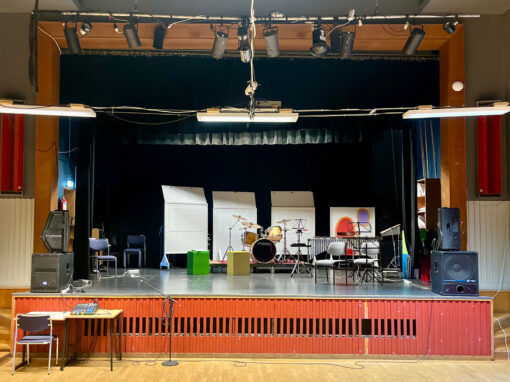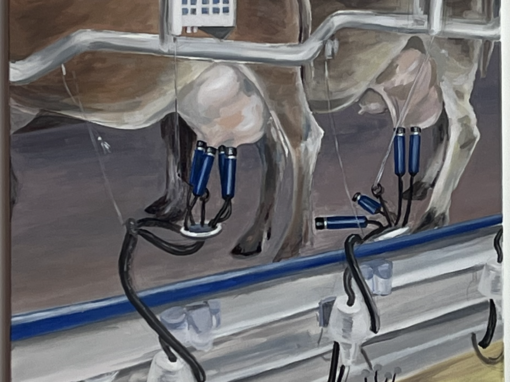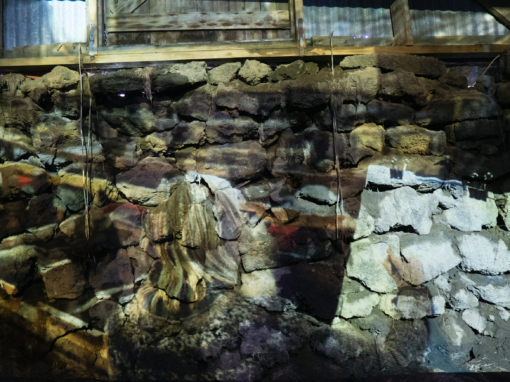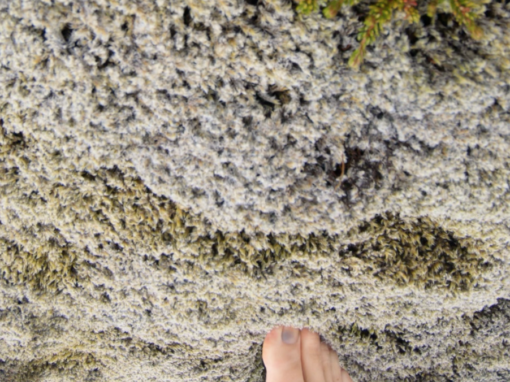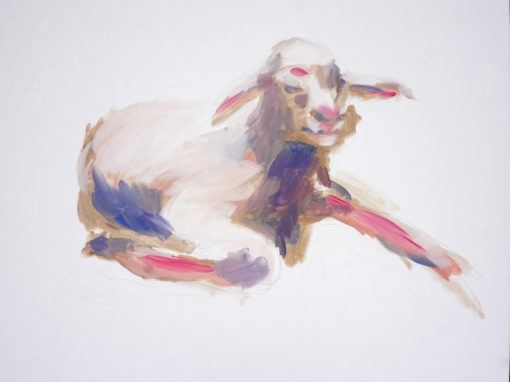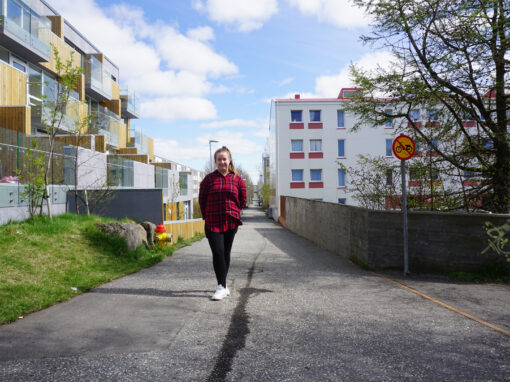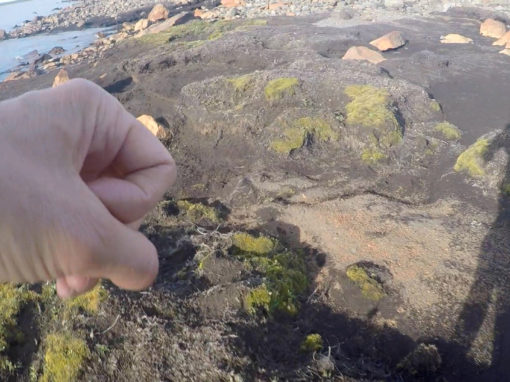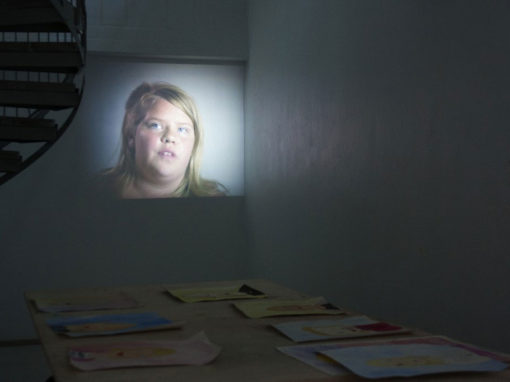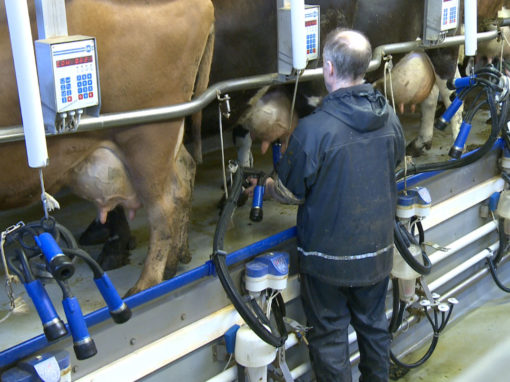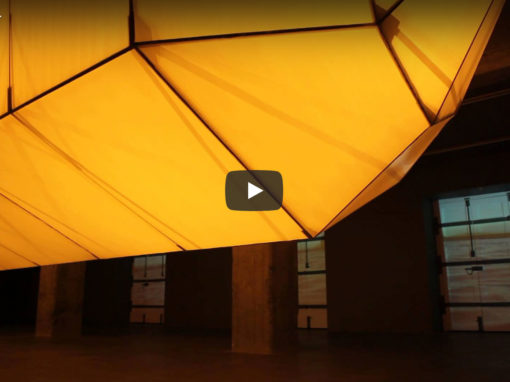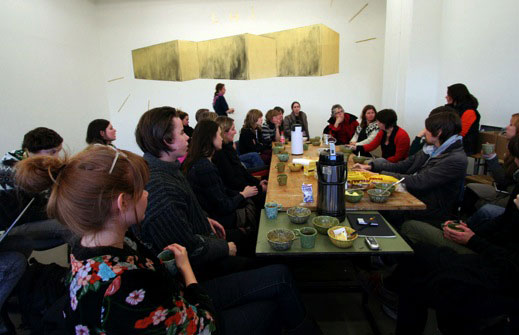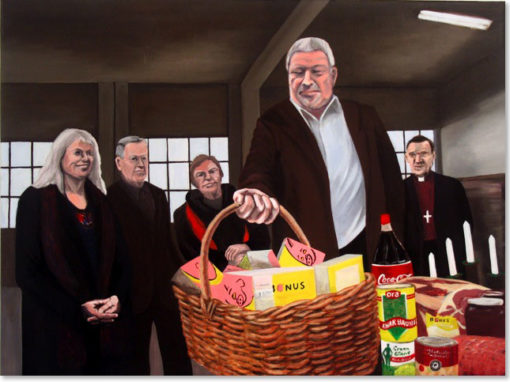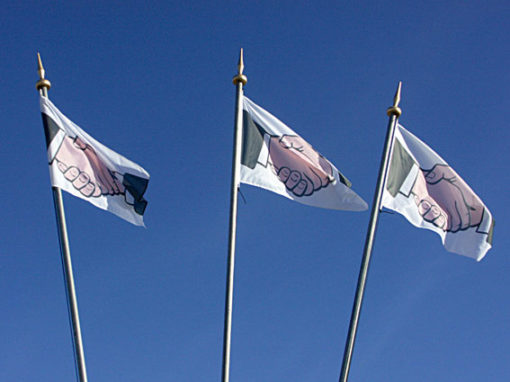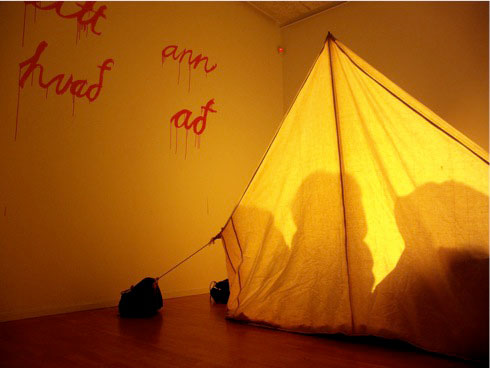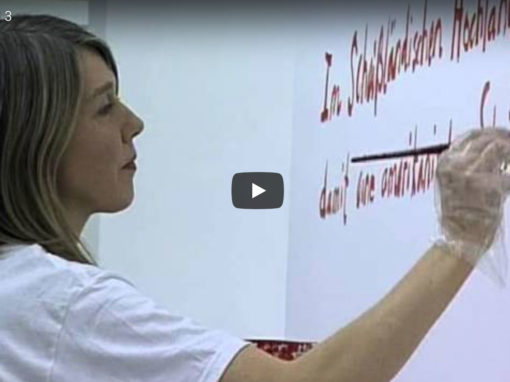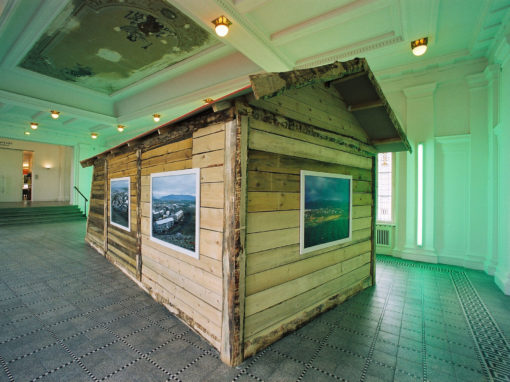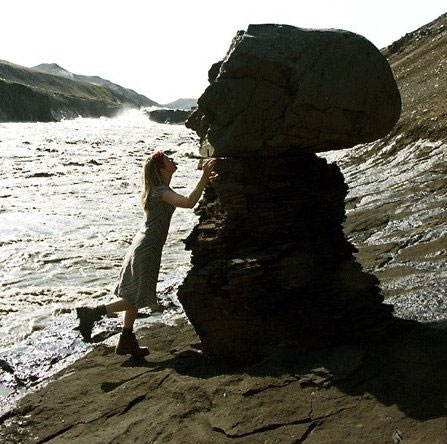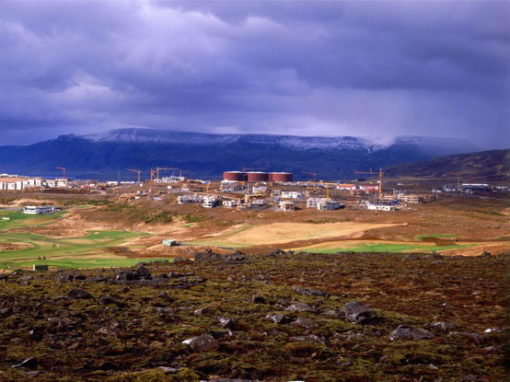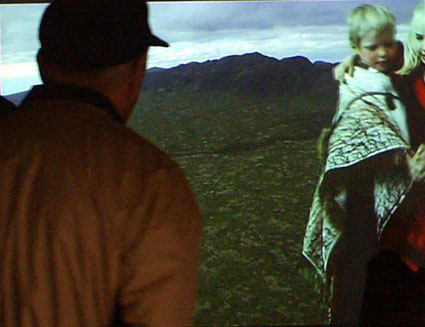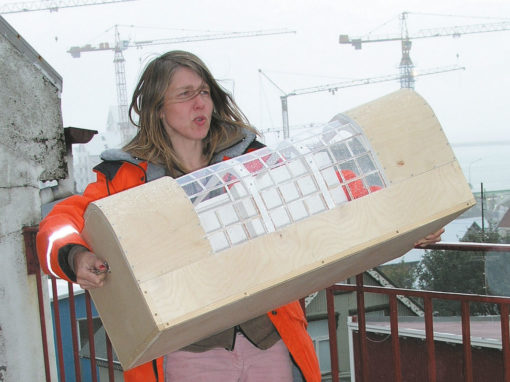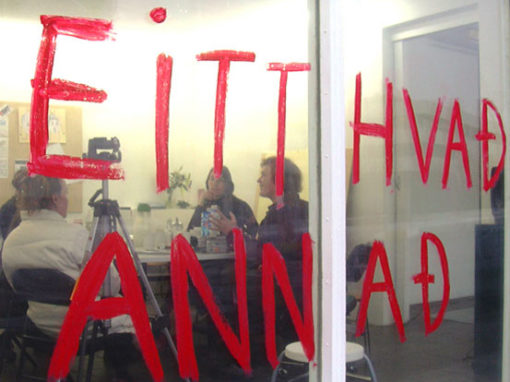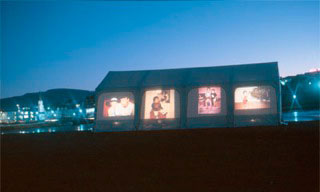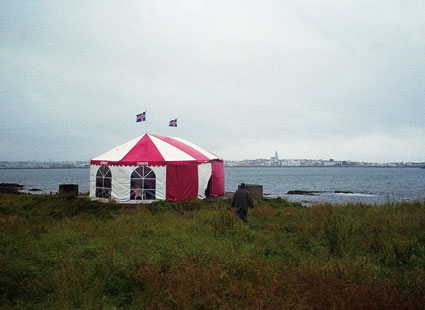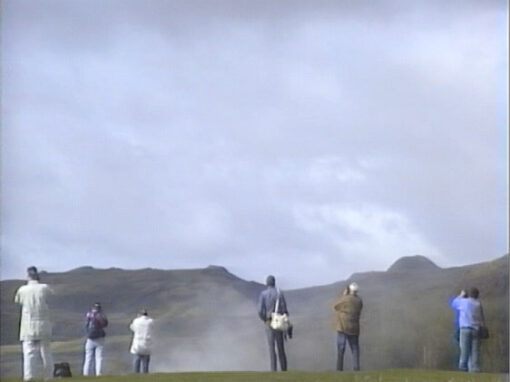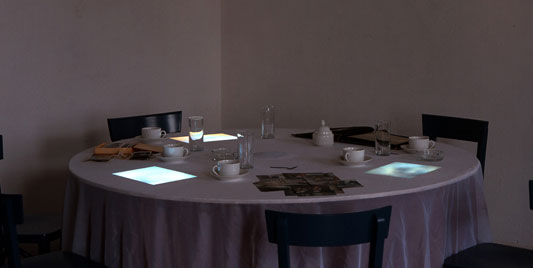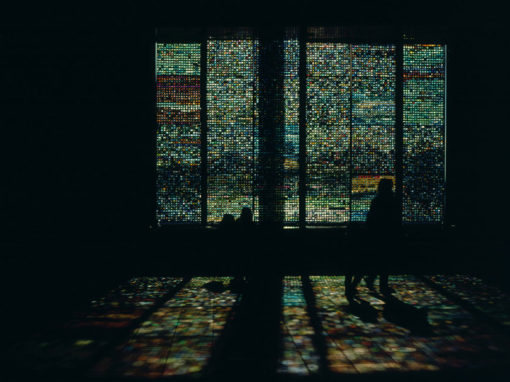Loan – Bonus


Disturbance
Collapse. A word replete with meaning, yet vague. Referencing certain dates, shifting currency market statistics, a different reality, and at best, even a changed world view. Like it or not, the collapse marked a certain divide in the Icelandic discourse. Whether it makes us laugh or cry to hear people declare that only post-collapse did many begin to put values such as togetherness, friendship, and raising children above material goods, yet the dominant discourse on it all—happiness and money—has unquestionably undergone a sea change. We now have permission to speak differently than we used to: we can say things it used to be best not to have bruited about; it is permissible to think—differently, and given different assumptions than before.
In 1966, French thinker Michel Foucault coined the term episteme to describe the possibilities and limitations of thought at any given time. Foucault divided the history of human thought in the West into several epochs. Concerning us most closely is the modern epoch, which succeeded the classical around 1800. Crisis characterised the opening of modern times. A deep crisis of the soul of the civilised white male forced to face the fact that between his own consciousness and the surrounding reality there was, in a certain sense, an unbridgeable gap. Certainly, human consciousness enabled him to experience the reality all around (and himself as a part of it); to describe it, understand it and define it. But at the same time, it bound him to a given place and time. Man was unable to transcend his experience. His view of reality was formed by his own experience, his own past, his point of view and his assumptions. The human longing for a firm foundation, reliable information and measurable truth was channelled into science. New means were invented to analyse reality. The microscope, the camera, sound recording equipment and a variety of other instruments were used to bring out what human consciousness had been unable to sense, and had not previously been viewed as part of reality. The invisible was made visible, the inner acquired a new meaning, and everything was organised in a system, making the world more manageable. Suddenly, life became more efficient. Aims grew clearer. Factories grew more productive. Adam Smith’s theory of supply and demand moulded the world of business. The concepts of production and productivity acquired a new meaning. Individuals became small cogs in the capitalistic system of production.
Literature and history, formerly intertwined in a turbulent tale of the past, went their separate ways. The text was not allowed to flow. Literature was meant to bring order to the mind, to describe reality in the most profound detail, the inner as well as the outer. Science put its mark on music and visual arts, no less than literature. At some point in time, it became generally agreed that the visual artist’s role was first and foremost to express a personal view of reality, rather than to depict it faithfully. Here, photography came to the rescue. Despite the fact that anyone who wanted to know knew that a photograph, not a pure replica of reality, was actually a complex interplay of matter and spirit, yet photography had a certain air of neutrality. Its relation to objective reality was of a different kind, and in a certain sense clearer, than the relation between other media and the world around us. The photographer might control the point of view and play with chemistry and light, both while the picture was being taken and in the darkroom. But you could not deny that it was reality itself which left its trace on a photosensitive surface. This connection with reality was extolled in all marketing of photography. The camera was a simple piece of equipment that anyone could use to capture true reality. The black-and-white photograph was thus felt to be truer and closer to reality than a painting, which reflected the artist’s present experience, past practice, talent and personal view of the world.
The twentieth century ran its course within the modern knowledge space. The shake-up led by Michel Foucault and other French thinkers (such as Claude Lévi-Strauss, Maurice Merleau-Ponty, Roland Barthes and Jacques Derrida) during the final thirty years of the century cracked open the modern knowledge space, creating new possibilities for thought. A new balance of power post-Cold War, a desperate search for a new enemy, new communication patterns and technological innovations at the turn of the 20th century—these developments have not only changed our experience of time and space, providing new solutions and creating new problems. They have also erased boundaries that seemed self-evident during the 20th century, such as the boundaries between work and home, production and consumption, science and the arts. The possibilities and constraints of thought are not what they were before.
It is within this new knowledge space that Ósk Vilhjálmsdóttir creates works that not only reflect our times before and after the Collapse, but also nudge reality, even making it look away shyly or laugh merrily.
Her work, Power in Your Hands re-creates a moment many people would no doubt rather forget. Six men in suits and a short-haired, black-suited woman, who blends into the group remarkably well, have joined hands, making a human chain that nothing can break, unless possibly changing economic fundamentals. Valgerður Sverrisdóttir, then Minister of Industry, the only woman in the group, has hooked palms with Alain Benda, CEO of Alcoa. It looks like she won’t want to let go. The work is a visual expression of the collusion and cosiness between Icelandic authorities and foreign and local capitalists. The scene is taken from reality, it springs from reality. The scene was originally caught by camera at a ceremony where Minister of Industry Valgerður Sverrisdóttir and Prime Minister Geir Haarde, on behalf of the Icelandic nation, along with representatives of national power company Landsvirkjun and the CEO of Alcoa, signed an agreement for the use of energy from the Kárahnjúkar dam and construction of Alcoa’s 322,000 metric tonne aluminium smelter at Reyðarfjörður in March of 2003. More than a thousand guests watched. An aluminium smelter was to be built in town, and for the occasion, the CEO of Alcoa decided to present the town with a sports facility and the local nursing home with a flag. The townspeople heartily rejoiced. Capital had arrived in town. A photograph of the event appeared in the media. The nation watched, but may not have realised the symbolic nature of the event, and how symptomatic it was of the dead end where the Icelandic nation found itself. Everything was up for sale on the international markets, both spirit and matter.
The photograph confirms the reality that characterised Iceland’s national life and thought at the opening of the 21st Century. Ósk catches the moment and enlarges it. The photograph capturing a decisive moment in the flow of time becomes an art performance when Ósk picks up her brush and turns a photograph into a painting. Still, she doesn’t change a thing. The colours are the same. The facial features, the wrinkles, Friðrik Sophusson’s sincere joy and Alain Balda’s awkwardness. All of it is conveyed through Ósk’s brush strokes. The painting is a faithful replica of the photo. Still, the transformation does have other effects. Despite all shake-ups, despite all the blurred boundaries and the digital revolution, a painting has a more tenuous connection with reality than a photograph. Looking at Ósk’s work, it is easy to disbelieve. Easy to think: I can’t believe the American flag was on stage; I can’t believe they held hands like that; I can’t believe their eyes had that eager shine; I refuse to believe there was that strange mix of joy and embarrassment conveyed by the work. But looking at the photograph on which it is based, I’m forced to believe. The photo demonstrates it to me, black on white. The reality of that moment was as surreal as Ósk’s work. The painting exalts this feeling of unreality, capturing and sharing with the viewer what we might call the aura or the essence of the times we experienced in Iceland at the outset of the 21st century.
In the knowledge space we currently inhabit, the formerly exalted contrast between photography and painting has been eliminated. The digital revolution has cut the chemical connection to reality, giving greater scope to the creative elements of photography. We know, just like people always did know, that the photo is not a pure replica of reality. Rather, it is formed partly by the photographer’s point of view and by the assumptions made while working on it. Just like the meaning we attribute to the photograph is formed by the assumptions we, as viewers, make in interpreting it, locating it within reality and our world of idea. Despite all that. Despite the fact that people form both the photograph itself and the meaning attributed to it, the photographer does not completely control it. The photographer does not form each movement, every unanticipated disturbance of the backdrop, the expression of those photographed and the look in their eyes. Perhaps this disturbance, beyond our control, is what is the essence of the photograph. We can view it as some sort of evidence of reality, a reminder that reality exists not only within us and in our relation to the external; it exists independently of us. And just as we can form and change it, it can also shape us and surprise us. Reality itself puts its mark on the photograph. We can’t look away, pretending this moment never existed, because the disturbance has already occurred.
Ósk Vilhjálmsdóttir does not attempt to look away, does not try to gloss over the marks reality has carved into the picture. She exalts them. She enlarges the moment, giving it a new texture, a new context.
Tycoon Jóhannes of Bónus presents the Mothers’ Aid Commission with a food basket for Christmas. The gift is accompanied by the promise of a bigger gift. The Mothers’ Aid Commission receive a present of ISK 21 million in December of 2006. Yes, 2006. Two years before the great collapse. A newspaper photographer arrives to catch the event on film. In the foreground: some Ora canned peas and a bottle of Coke. Jóhannes has a paternal air, powerful, yet kind-hearted. Bishop Karl Sigurbjörnsson watches from a distance. In a newspaper interview, Jóhannes says he’s feeling the Christmas spirit. “You always feel good when you give, and from day one, it’s been our guiding principle that if you don’t give, you don’t get,” says Jóhannes.
Ósk’s work brings out the sanctimonious air caught by the photo. Rather than creating an exact replica, she plays with the subject matter, stylising it in the manner of propaganda posters from the 1920s. While making the moment unreal in a certain sense, this brings across the heart of the matter. The painting’s texture and the mood created by Ósk underline it. The light flooding in through a window gives the picture religious overtones, emphasised by the cross of the bishop who watches in the distance and the gaze of the three persons drinking in the kind-hearted capitalist’s every movement as he nicely arranges the gift basket on a table facing us, the audience. The capitalist’s benevolence and generosity are thus sarcastically exalted.
In Bónus, Ósk highlights the reality that characterised Icelandic society during the boom years before the Collapse. The obvious stands out a mile; he who has too much gives to those who have too little, but the underlying question is why some people have too much while others have practically nothing. In this sense, Ósk’s work may be seen as criticism of the discourse claiming that everyone participated in the excesses, everyone spent more than they earned, everyone was addicted to consumption, everyone was divorced from reality. Such an interpretation resonates with the meaning we can attribute to Lán, which can ambiguously mean either Good fortune or Loan, where the Icelandic tycoons, cloaked in the garb of responsibility, appear about to make an enticing offer which will subsequently mire Joe and Jane Consumer in the quicksand of debt. The nattily clad tycoons need the working people’s money to support their house of cards.
The working people, the proletariat who have nothing to lose, except perhaps their debts, appear to us in a painting painted from a photograph taken by Ósk herself on the Seaman’s Day at Stykkishólmur. The work was originally exhibited at her show “Rowing for Your Life” at Hafnarborg in 2009. Perhaps the subject may be described as rowing for your life with no destination in view. In the boat nearest to the viewer, we see two men rowing with implements—ordinary garden spades—that appear ill-suited to the task. They sweat and struggle, but don’t seem to be making much headway. Their voyage comes across as aimless splashing. The leader sits in the bow, holding a beer. A slight belly protrudes above his waistline, and the statement on his T-shirt forces itself on our attention: Brown is the color of Poo. Ósk adopts this title for her work, thus drawing our attention to the words and to the man who sits idly by while his comrades row full tilt on a calm sea, not giving shit for any of it. Pointing out the obvious. Poo is brown. Were it not for this simple but disconcerting statement, the work would be in better balance. The words, which only state the obvious, disturb the equilibrium. Somehow, this unexpected disturbance is what points out the reality out there. The painting thus not only shows us working men making merry on Seamen’s Day; it also raises questions about the life they lead, the feelings they have, the thoughts they think, or might think. We must not forget that this is a painting. Not a photograph. So the people aren’t real. Or are they?
Ósk Vilhjálmsdóttir not only finds her models in the real world; she pulls reality into the picture. In this way, she raises questions about truth, glorification and values. Although the surface may look simple, nothing is given. The past acquires new meaning. The meaning is formed by the knowledge space we inhabit, our opportunities to think about reality as it is and as it was. Art involves the possibility of breaking through these boundaries. To think what you were not allowed to think. To point out what most people proved unable to point out. What appears to be only a minor disturbance may later provide a clue as to how and why things were the way they were. Are. Before the Collapse. After the Collapse.
Text by Sigrún Sigurðardóttir
projects
